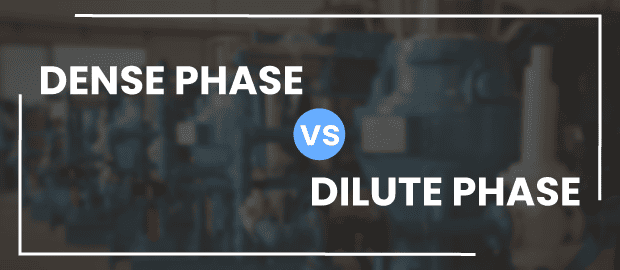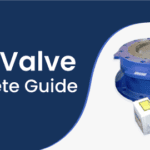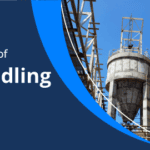When it comes to bulk material handling and transfer, you can either chose a pneumatic conveyor or a mechanical conveyor. Here, pneumatic conveyors provide numerous benefits compared to mechanical systems such as simple routing, less maintenance, reduced exposure to hazardous materials etc. Also, pneumatic conveying systems are designed based on the type of the material being transferred, which brings us to the different transfer modes that are used – dense phase vs dilute phase. Thus, for this read, let’s check out the difference between Dilute Phase and Dense Phase, which will help you to pick the right system based on your requirement.
Discover Which Conveying Phase Suits Your Needs
A] What is Dilute Phase?
In the dilute phase pneumatic conveying, high velocity is used to keep the materials suspended in the air as it moves through the conveying pipe. This ensures that the material is conveyed continuously without getting accumulated at the bottom, and the velocity used in dilute phase range from 15 m/s to 40 m/s based on the material being conveyed.
Dilute (lean) phase pneumatic conveying systems are suitable for less abrasive materials, such as sawdust, coffee grounds, resins, pelletized products, and flour. The two options available in dilute phase are pressure conveying and vacuum conveying. Also, dilute phase conveying supports flexible pipe routings, which makes it ideal for new and retrofit installations.
1. Dilute Phase Pressure Conveying
In this process, the positive displacement blower (exhauster) is placed at the beginning of the conveying line that helps move the material through the air, which is then released from a bin via a rotary airlock. One of the benefits of using a dilute phase pressure conveying system is that you can transfer the material being conveyed into different lines through diverter valves.
For example: If you want to move grains into different silos, you can use a multiple diverter valve to split the conveying line, which will allow you to distribute grains into as many silos as you need.
2. Dilute Phase Vacuum Conveying
In contrast, for dilute phase vacuum conveying, the positive displacement blower (exhauster) is placed at the end of the conveying line. Here, the blower draws the air from the beginning of the conveying line to create an airflow that moves the material through the conveying pipe into the receiver.
The primary benefit of vacuum conveying systems is that it helps you to pick up materials from multiple locations and collect (distribute) it to a single destination.
3. Pros of Dilute Phase
- Dilute phase conveying systems are easy to clean and maintain.
- It has a slightly lower capital cost compared to dense phase conveying systems.
- They are compact, simplistic and any material can be conveyed in it through a pipeline, irrespective of its size and shape.
- It is ideal for lower capacities, lower distances.
4. Cons of Dilute Phase
- The high velocity that needs to be maintained in the dilute phase conveying systems results in high power consumption.
- Use of abrasive products could result in wear and tear of the system component (conveying line and pipe elbows).
- It leads to particle breakage and degradation of materials being conveyed.
- It cannot handle higher capacities and longer distances.
- Since dilute phase requires higher air volume, large filtration equipment is required.
Discover Which Conveying Phase Suits Your Needs
B] What is Dense Phase?
Dense phase pneumatic conveying is used to convey extremely abrasive, friable and/or heavy materials. Unlike dilute phase, the materials are not suspended in the air, rather in dense phase, a combination of low velocity and high pressure is used to move the material through the pipe, which then settles and accumulates at the bottom. The velocity used in the dense phase conveying is low and ranges typically around 2-7 m/s.
Dense phase pneumatic conveying systems are suitable for plastics, chemicals, metals and minerals, cement, limestone etc. In dense phase too, two options are available – pressure conveying and vacuum conveying.
1. Dense Phase Pressure Conveying Systems
In this process, compressed air above 1 Barg is used to push materials from a pressure vessel through a pipeline to the destination, wherein the air and product are separated. Low velocity is used initially to move the product through the pipeline, which then gradually accelerates towards the destination. Dense phase pressure conveying is well-suited for conveying high-capacity materials over a long distance to multiple destinations and is ideal for solids that are fluidizable.
2. Dense Vacuum Conveying Systems
In this process, high capacity vacuum pumps are used to convey materials from a feed hopper to a receiving vessel (vacuum hopper). Upon reaching the destination, the air and product are separated by a filter, with the conveyed product being discharged into the destination silo. Dense vacuum conveying is well-suited only for low distances and low capacity systems.
Further reading: Vacuum Dense Phase Pneumatic Conveying
3. Pros of Dense Phase
- Since dense phase conveying is operated at a low velocity, it uses less power.
- There is minimal wear and tear of the system component.
- There is also minimal degradation and particle breakage of materials being conveyed.
- Also, since dense phase systems operate at low air volume, it requires compact filtration equipment compared to dilute phase.
4. Cons of Dense Phase
- Dense phase conveying systems have a slightly higher capital cost compared to dilute phase system.
- It is bulkier than dilute phase systems.
#Dense Phase vs Dilute Phase Systems – A Quick Overview
| Sr. No | Dense Phase System | Dilute (Lean) Phase System | ||
|---|---|---|---|---|
| Power Consumption | ||||
| 1 | High-power efficient (usually consumes 40% to 50% of the power used by Lean/Dilute Phase Conveying Systems) |
Low power consumption (usually consumes 2 to 2.5 times the power used by Dense Phase Conveying Systems) | ||
| Air Usage | ||||
| 2 | Uses a lesser quantity of Air. | Uses a large quantity of Air. | ||
| 3 | Powered by Screw Compressors since operating pressures are higher. | Powered by Roots Blowers with high volumes since operating pressures are lower. | ||
| Velocity of Conveying | ||||
| 4 | Runs at a very low velocity of conveying (usually 2 to 4 m/sec.) | Runs at a very high & dynamic velocity of conveying (usually 28 to 40 m/sec.) | ||
| Wear & Tear | ||||
| 5 | Less wear and tear on pipeline and system components due to low velocities. | Excessively high wear and tear on pipeline and systems due to high velocities. | ||
| Segregation & Degradation of Material | ||||
| 6 | Does not cause segregation of material because of very low velocity. | Causes segregation of material because of very high velocity of conveying. | ||
| 7 | Degradation of material particles is bare minimal. | Causes a lot of degradation of material particles. Sand is highly-abrasive material which knocks off piping wall thickness due to high velocity conveying rate. | ||
| Receiving end Headroom Requirement-Bag filter Size & Height | ||||
| 8 | Needs a very small-sized Bag Filter due to lower air volumes hence low filtration areas. | Needs a very large-sized Bag Filter due to large air volumes hence very high filtration area. | ||
| 9 | Height of bag filter will be very less in comparison. | Due to a larger filtration area, bag filter’s height and diameter will be much larger than that of the dense phase system. | ||
| 10 | A Rotary Valve is not required to be placed below the bag filter. | A Rotary Valve is required to be placed below the bag filter to hold vacuum. | ||
| 11 | Just a terminating box/bend going into the silo hence no space issues. | An involute cyclonic separator cum receiver required to capture the material coming in at high velocity. | ||
| Air Volume & Pipe Size | ||||
| 12 | Air volume for dense phase system will be very less. | Air volume for lean/dilute phase system will be very high. | ||
| 13 | Pipe size for dense phase system will be relatively smaller. | Pipe size for lean/dilute phase system will be much larger. | ||
| Health & Safety | ||||
| 14 | Dense phase systems use gentle velocity, which does not cause a lot of frictional charge & spark generation hence is safe. | Lean/dilute phase systems use high velocity to convey, which leads to a lot of frictional charge & spark generation and is a potential hazard for fire, blast etc. | ||
| Cost – Capital Vs Running | ||||
| 15 | The capital cost of a dense phase system (complete project as a cost to company) shall be slightly higher than that of a lean/dilute phase system. | The capital cost of a dilute (lean) phase system (complete project as a cost to company) shall be slightly lower than that of a dense phase system. | ||
| 16 | Running costs due to the power consumed will be minimal for a dense phase system. | Running costs due to the power consumed will be drastically higher for a dilute/lean phase system for sand. | ||
| 17 | Maintenance costs shall be relatively less. | Maintenance costs will be very high for sand vacuum suction. | ||
Discover Which Conveying Phase Suits Your Needs
#Dense Phase vs Dilute Phase Pneumatic Conveying – Which to Choose?
When it comes to picking the right pneumatic conveying system, the choice is primarily governed by two things; the material properties and the capacity & distance of conveying.
For example, dense phase conveying is optimal for powders, pellets & granules. Whereas, flakes are generally conveyed in the dilute phase due to their particle size & shape.
Likewise, for low capacity and short distance conveying dilute phase systems are ideal, while high capacity and long-distance conveying are catered by dense phase systems.
Hope this guide helps you make the right choice and for more information or a query, get in touch with us!



